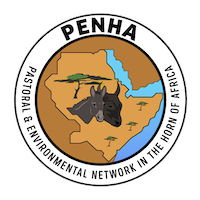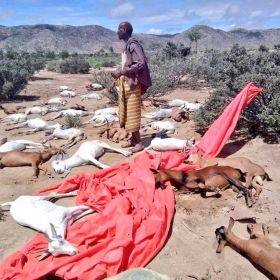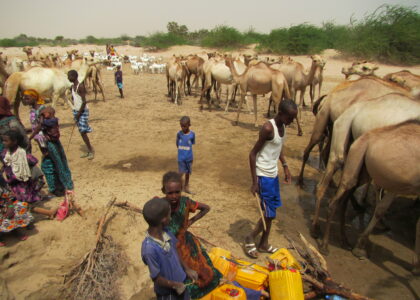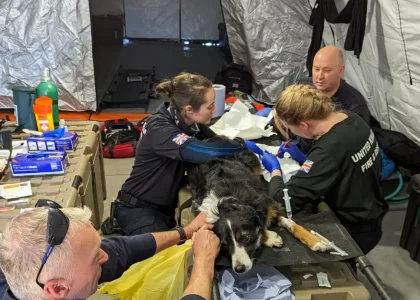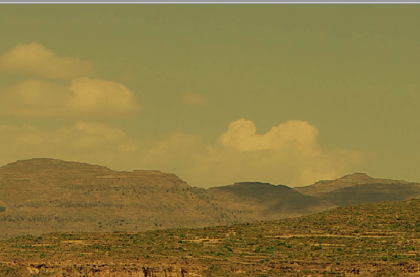By Bereket Tsegay*, John Livingstone**, Amsale Shibeshi** and Sadia Ahmed**
The Horn of Africa (including the Djibouti, Eritrea, Ethiopia, Kenya, Somalia and Sudan) has been facing various natural disasters that are exasperated by government’s weak institutional capacities, and the absence of effective risk analysis and robust early warning mechanisms in place. Few to mention the El Nino, volcanic eruptions, droughts, flood, locust infestations and now the Tropical Cyclone Sagar. These have been hugely impacting the communities by destroying their livelihoods including both the human and animal lost.
As Abdi Dahir report on Quartz shows the Tropical cyclone Sagar [means “the sea” in Hindi] ‘formed in the Gulf of Aden between Yemen and northern Somalia late last week. Since landing over the weekend, the cyclone system has caused heavy rains in both the Puntland and Somaliland regions of Somalia, and moved along the coast to strike the tiny nation of Djibouti.‘
As the various humanitarian actors’ reports on the adverse impact of deadly Cyclone Sagar on the communities show so far at least 15 people dead and thousands remained displaced [this figure is updated indicating the number of people who lost their lives could be more than 50 – see below]. It destroyed infrastructures including schools, human settlements, and many livestock are washed away.
The report from the Norwegian Refugee Council indicated that ‘20,000 people were affected by flooding in Djibouti, more than 10,000 people were displaced in Somaliland, and homes and fishing boats were destroyed in Puntland.’ Attacking both the off-shore and on-shore part of these countries, the magnitude is far beyond the capacities of the communities to effectively respond to it. A call for humanitarian assistance.
Pastoral and agro-pastoral communities who live in on the vast flat land of Djibouti and Somalia are greatly affected by this deadly Tropical Cyclone Saga. Cyclones as natural disasters are global issues as they are linked to climate change – affecting thousands communities in the countries affected by these hazards. Berbera in Somaliland is one of the hugely affected areas of the Indian Ocean coastline where PENHA at least at a low scale is trying to help pastoral communities to cope with the natural disaster – mainly meeting their after-shock immediate needs. The assistance was delivered to 120 households affected by cyclone sagar in Berbera town where the handover of items made by the Mayor of Berbera (see photo).
Impact of cyclone Sagar
The report from PENHA office in Hargeisa, Somaliland highlights the key impacts of the Cyclone.
- Cyclone Sagar hit six districts in Somaliland: Awdal, W. Galbeed and Sanaag regions in Somaliland on 19 May 2018. These districts are Lughaya, Zaila, Berbera, Baki, Lasqoray, northern part of Hargeisa and North of Gabiley.
- National Disaster Preparedness and Food Reserve Authority (NADFOR), Hargeisa mentioned that the death toll from the cyclone is close to 50 persons. The total people impacted, directly or indirectly, are around 669,000. However, the directly affected people are estimated to be 168,000. NADFOR will soon publish an official figure of the people affected and share with the humanitarian community. On the other hand, around 80% of the livestock of the affected people have died. Residential homes are destroyed in many villages and towns. Agricultural farms are washed away. Large number of Schools, MCHs and water wells, including boreholes, destroyed. Roads were cut-off by piles of mud and other debris (road access has now improved after some maintenances). Many fishing boats are also destroyed.
The report from the Awdal Region of the Republic of Somaliland confirms the death of 50 people and 10 people still missing. The figures indicated on the ‘BRIEF REPORT FOR EFFECTS OF SAGAR CYCOLNE IN AWDAL REGION’ which is dispatched on27.05.2018 reflect only the magnitude of the devastating impact of the region. It is expected the national aggregate report to show more number of deaths and the scale of the damage on the livelihoods of the communities and infrastructure. [See extract of the report below which confirms the above statements].
‘SAGAR Cyclone made land fall in Awdal region (Lughaya, Baki, Zeila and Borama districts) on 19th of May 2018. The death toll is 50 with more than 10 still missing. 80% of livestock and irrigation farms were died and destroyed. Infrastructure (homes, water systems, health facilities and schools) are seriously damaged, blocking access by humanitarian actors in the three districts and other isolated areas across the zone.’
Indeed, the lesson to be learned from this shock is that we need to strengthen the state and non-state actors risk analysis systems, support them to boost their early warning instruments, capacitate their weather monitoring and forecasting abilities and enhance their early warning communication and information systems which can contribute towards on how the communities in the potential high risk areas can reduce such calamities. More than any time, the regional body – Intergovernmental Authority on Development (IGAD) should play key role in facilitating the such process and devising regional risk reduction strategies.
Photo credit: Mohammed Yusuf (for the first photo) and PENHA Somaliland Office (for the second photo)
* Bereket Tsegay specialises in conflict and security studies, governance and policy analysis, climate change, pastoralism and NRM in the Horn of Africa. He holds a PhD from the School of Oriental and African Studies (SOAS), University of London. He can be contacted: b.tsegay@penhanetwork.org or bere.tsegay@gmail.com.
** John Livingstone, Amsale Shibeshi and Sadia Ahmed are PENHA Somaliland Staff members.
